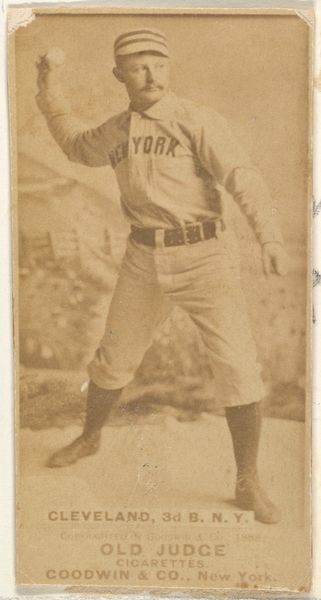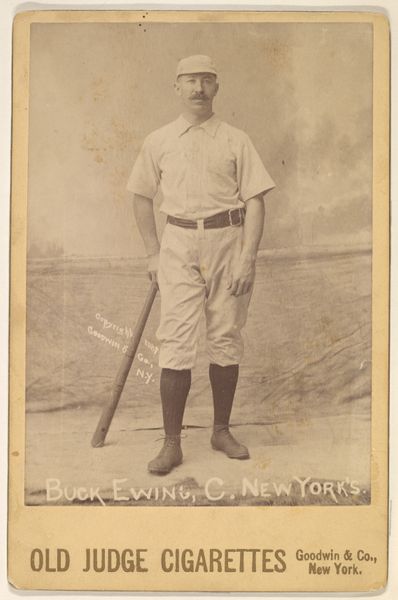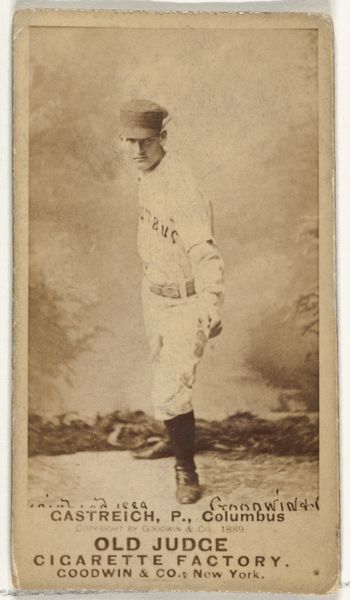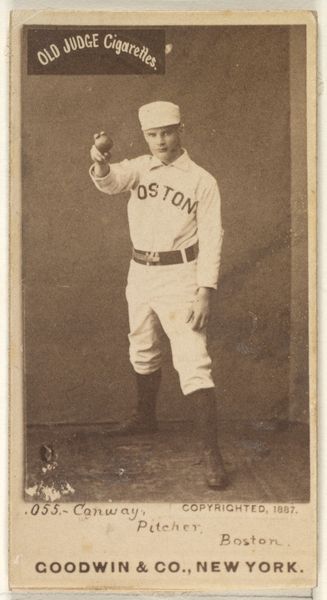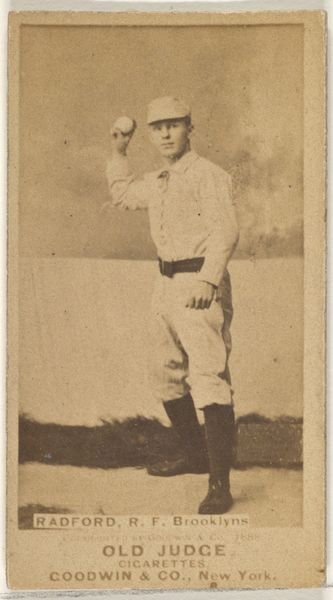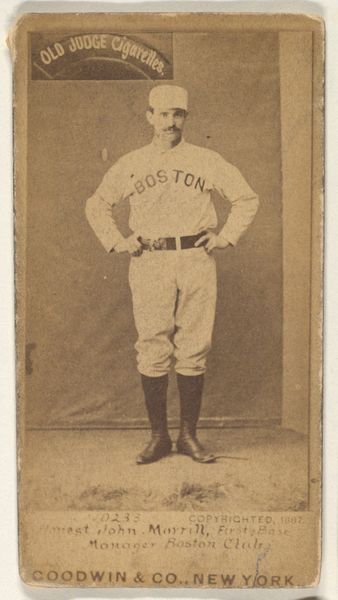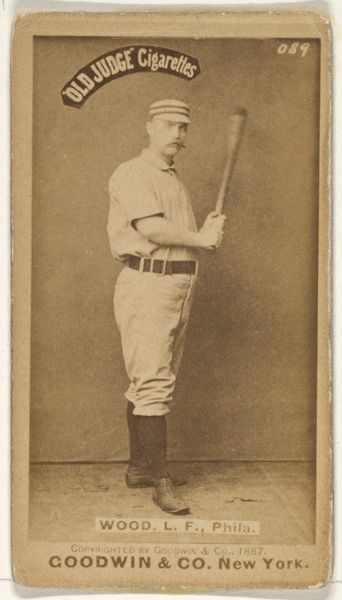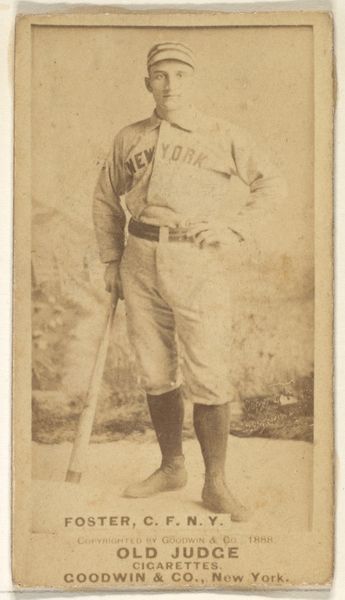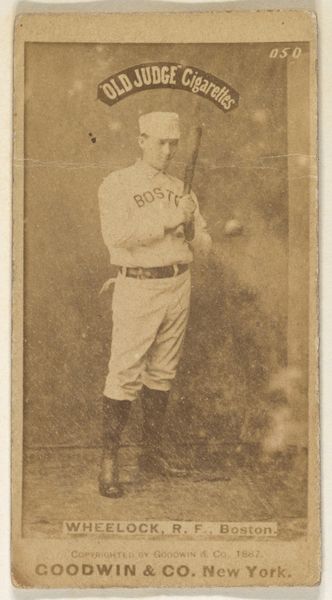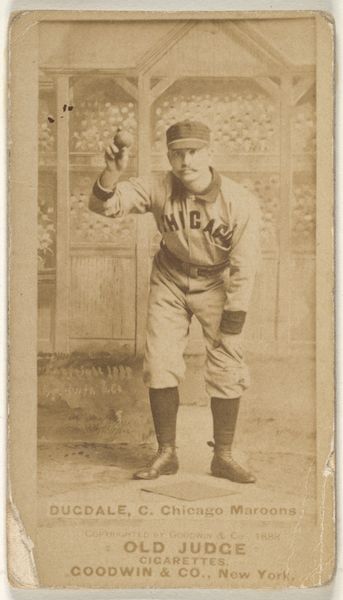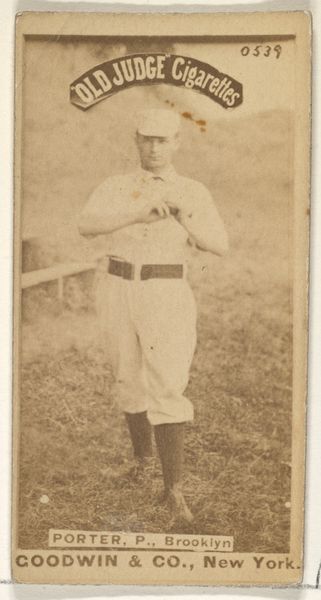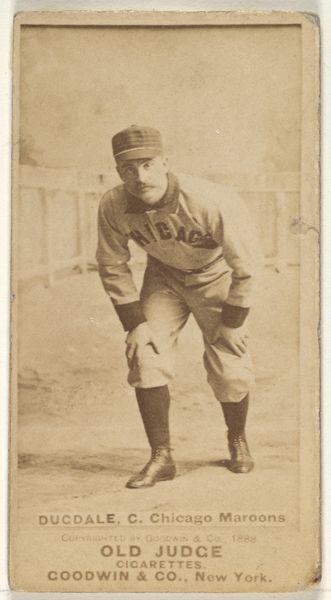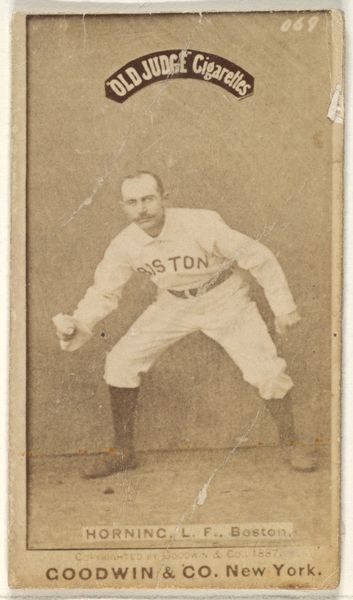
Rusie, Pitcher, New York, from Mayo's Cut Plug Baseball series (N300) 1895
drawing, print
portrait
drawing
wedding photograph
photo restoration
low key portrait
caricature
baseball
portrait reference
framed image
men
portrait drawing
athlete
portrait art
fine art portrait
celebrity portrait
Dimensions: Sheet: 2 13/16 × 1 5/8 in. (7.2 × 4.1 cm)
Copyright: Public Domain
Editor: This is "Rusie, Pitcher, New York," a print from the Mayo's Cut Plug Baseball series, made in 1895. What strikes me is how different it feels from modern baseball imagery. It's not action-packed; it's a static portrait. What do you see in this piece? Curator: This image exists at the intersection of sport, celebrity culture, and capitalist enterprise. Beyond just being a portrait of an athlete, it reflects how these early baseball cards were tools for both promotion and the construction of celebrity. Who got represented and how becomes a loaded question. Who benefits from the circulation of these images? Editor: So it's not just about the player, but the industry surrounding him? Curator: Exactly. Consider the context: baseball was rapidly professionalizing, attracting massive audiences, but also facing accusations of corruption. Tobacco companies like Mayo sought to legitimize their products and associate them with wholesome, athletic figures. The seemingly straightforward portrait, then, is actively participating in a cultural narrative, constructing an image, a persona, of respectability and national pride tied to capitalist goals. How do the advertising components – ‘For Chewing and Smoking’ – strike you? Editor: It definitely shifts the reading. It is less of a celebration of Rusie himself, and more about associating a face with a brand, even leveraging the image of athletic prowess to promote chewing tobacco. It’s almost a form of early labor exploitation. Curator: Precisely. And it makes you wonder, what were Rusie’s opinions and experience regarding all this? How do we excavate the narratives that were actively repressed by such commercial depictions? It speaks volumes about labor, commercialism, and image construction in late 19th-century America. Editor: I never considered a baseball card having so much cultural weight! Thanks.
Comments
No comments
Be the first to comment and join the conversation on the ultimate creative platform.
